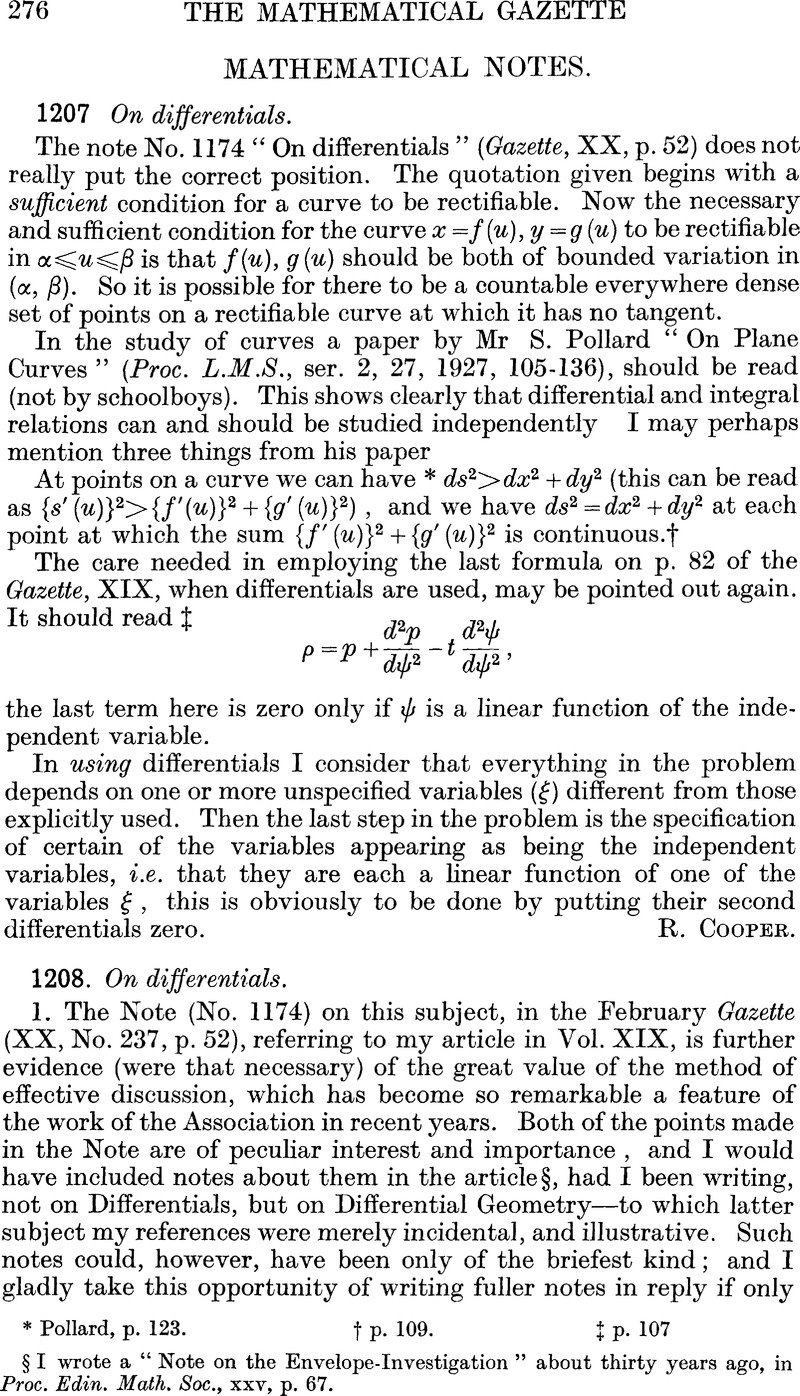No CrossRef data available.
Article contents
Abstract

- Type
- Mathematical Notes
- Information
- Copyright
- Copyright © Mathematical Association 1936
References
page no 276 note § I wrote a “Note on the Envelope-Investigation” about thirty years ago, in Proc. Edin. Math. Soc., xxv, p. 67.
page no 277 note * As, in fact, we all do. Let teachers of the elementary applications of calculus to geometry and kinematics (and, in particular, the writers of the Note—who are authorities on such teaching) ask themselves how they and their pupils would fare if they did not so begin.
page no 278 note * “Length” being fundamentally an attribute of the straight line.
page no 278 note † The writing of this reply has clarified my own thinking, on a point which has troubled me a good deal. The writers of the Note have, therefore, helped me quite a lot, even should I fail to carry conviction to them.
page no 278 note ‡ See any of the well-known standard textbooks: e.g. Lamb (1902), § 155; Gibson (1906), § 144.
Page no 278 note § See the Cambridge Tract, § 5·10.
Page no 279 note § Goursat (1902), § 201—referred to in the paragraph (following Theorem 5-312), cited from the Cambridge Tract—puts it thus : “toutes ces courbes C restent tangentes à une courbe determinée E …𠇍 Osgood (1907), pp. 344-5, begins with this definition, but turns over to the other as being more or less equivalent. (Note his phrase “will usually intersect”, in the relevant paragraph.)




